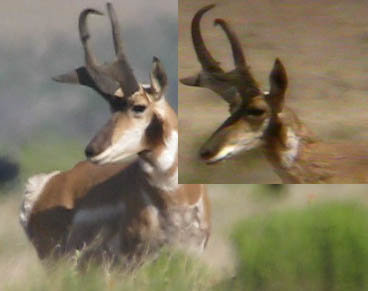EliAGrimmett
Member
How should one go about predicting which unit in Arizona (or somewhere else) will have the biggest buck(s) each year? We usually just base everything off the preceding year and sometimes even the year before that, but is there a way to make better predictions? Is there a way to determine when giants will again show up (like the photo below)...
The inserted photo in the photo below was taken in 2002. The main photo was taken in 2009. The photos were taken within a half mile of each other. Obviously, the genetics in that particular location are very strong considering both bucks were well over 90-inches. But, what's weird, is what happened in that area from 2004 to 2008....and that's to say nothing. We never saw a buck even close to those two bucks in the 5 intermittent years.
We see things similar to this in many of the better areas in Arizona and New Mexico. Watching the rise and fall of certain areas is part of the adventure of scouting, but I was wondering if any biologists or people smarter than me might have some insight into how these kinds of things work.

The inserted photo in the photo below was taken in 2002. The main photo was taken in 2009. The photos were taken within a half mile of each other. Obviously, the genetics in that particular location are very strong considering both bucks were well over 90-inches. But, what's weird, is what happened in that area from 2004 to 2008....and that's to say nothing. We never saw a buck even close to those two bucks in the 5 intermittent years.
We see things similar to this in many of the better areas in Arizona and New Mexico. Watching the rise and fall of certain areas is part of the adventure of scouting, but I was wondering if any biologists or people smarter than me might have some insight into how these kinds of things work.






